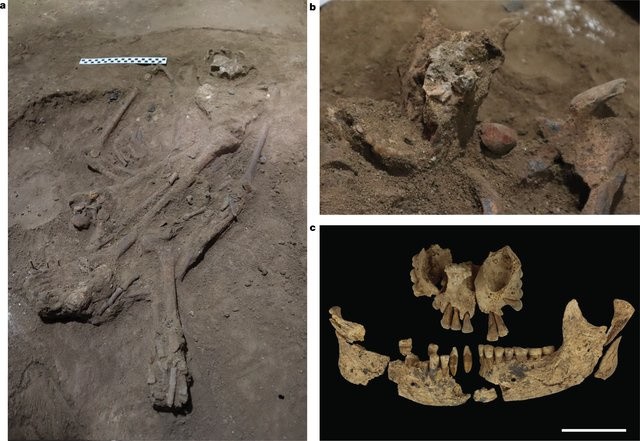A new life was saved on the remote island of Borneo.
A recent study published in Nature reveals that stone age humans had medical knowledge as scientists unfolded bones buried for 31,000 years inside an Indonesian cave.
Using advanced technology of radiocarbon dating techniques, a team of Australians and Indonesians found the body of a young individual who was said to be 31,000 years old in the Liang Tebo cave, Kalimantan province in Borneo.
The cave is a large three-chambered limestone with artistic preserved rock art.
Moreover, the archeological discovery showed comprehensive human anatomy knowledge to control blood loss, pain, and infection.
Surgeons 30,000 years ago had a complete understanding of complex medical surgery using tools carved from stones.
In an email to CNN, Maxime Aubert, a professor at Griffith University's Centre for Social and Cultural Research in Queensland, explained that the discovery is direct, archeological, and tangible evidence of high community care.
He added that surgery could be fatal for blood loss, shock, and subsequent infection.

Surgery
In a careful excavation, scientists discovered that a young individual in the cave had his lower left leg surgically removed, possibly as a child.
The individual survived the surgical procedure and lived for six to nine years.
The study noted that the burial in the Liang Tebo cave had a thorough and remarkable treatment for the individual.
However, researchers ruled out any animal attack as no infection was present in the remains.
In addition, there was no sign of amputation as a punishment.
The individual did not suffer from infection, likely for an open-wound surgery. It was despite that there were no painkillers or antibiotics during that time.
Infection was also high due to the region's tropical environment.
Surgeons, with their carved stones and medical equipment, might have applied traditional plant treatments, which were dominant during their time.
There could be slim survival cases, but it might have been possible.
The island is rich in plants that could have been used as an alternative treatment for the individual.
On the other hand, a well-preserved older man remained the oldest amputee found in France.
The bones were estimated 7,000 years. Research showed that the man survived after removing his forearm showing surgical healing in the pastoral-agricultural community.
After suffering from surgery, it revealed that the man still enjoyed a social status as indicated by grave gifts.
According to the study, the man might have benefitted from a kind of "community care."

Importance
The study noted that the evidence found in the cave showed that early humans were capable of advanced-level medical expertise. It also leads to more possible medical surgeries that could perform without modern surgical tools.
The such discovery proved the comprehensive knowledge of humans in surgery, contrary to claims that they could not perform any medical procedures. It also noted their understanding of medicinal plants to heal the open wound.
You can access the research here Surgical amputation of a limb 31,000 years ago in Borneo.
Did this article help you? Share this on your social media.
For more similar stories, don't forget to follow Nature News
© 2025 NatureWorldNews.com All rights reserved. Do not reproduce without permission.





